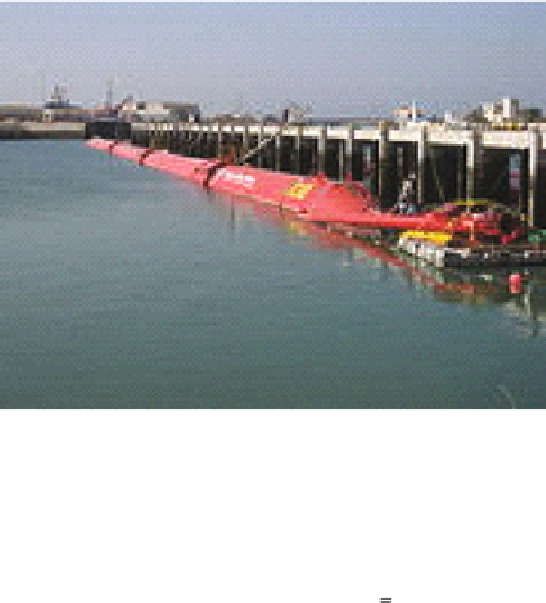Agriculture Reference
In-Depth Information
Fig. 13.6
Ocean Wave Power engines in the harbour of Peniche/Portugal
currently used to meet people's demand for electricity. Scotland has particularly
high potential: much of the western coastline is exposed to the Atlantic Ocean.
Portugal now has the world's first commercial wave farm, the
Aguçadora Wave
machines generating 2.25 MW. Initial costs are put at C8.5 million. Subject to suc-
cessful operation, a further C70 million is likely to be invested in 2009 on a further
28 machines to generate 525 MW.
13.6.3 Watermill
A watermill is a structure that uses a water wheel or turbine to drive a mechani-
cal process such as flour or lumber production, or metal shaping (rolling, grinding
or wire drawing). The ancient Greeks and Romans were the first to have used
water for powering mills. A watermill that generates electricity is usually called
a hydroelectric plant.
13.6.3.1 Working Principle of Watermills
Typically, water is diverted from a river or impoundment or mill pond to a turbine
or water wheel, along a channel or pipe (variously known as a flume, head race, mill
race, leat, leet, lade (Scots), or penstock). The force of the water's movement drives
the blades of a wheel or turbine, which in turn rotates an axle that drives the mill's
other machinery. Water leaving the wheel or turbine is drained through a tail race,
but this channel may also be the head race of yet another wheel, turbine, or mill.
The passage of water is controlled by sluice gates that allow maintenance and some


Search WWH ::

Custom Search